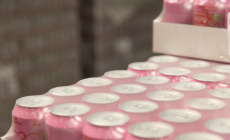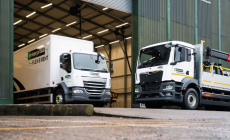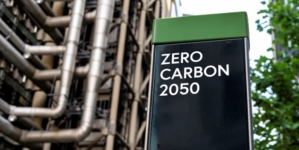-
SURECAM TO DISCUSS POTENTIAL AI VIDEO TELEMATICS PITFALLS AT FESTIVAL OF FLEET TECHNOLOGY - 23 hours ago
-
Loadhog Announces Grand Opening of New Factory in Obernai, France - October 6, 2025
-
Prism eLogistics ‘Toasts the future’ with HMRC Duty Suspense Authorisation - October 2, 2025
-
BCMPA Members Quench Demand for Functional and Wellness Drinks - October 2, 2025
-
Combilift Re-Qualifies for Deloitte Best Managed Companies Award – 13 Years of Excellence - October 1, 2025
-
New Industrial Research Shows Demand for Bespoke Design Solutions to Combat Warehouse Bottlenecks in Peak - September 30, 2025
-
Launch of new brand “AntOn by Jungheinrich” - September 30, 2025
-
Combilift’s 100,000th Forklift on a European Tour: Enter to Win & Support a Life-Changing Cause! - September 30, 2025
-
Mstack launches Chemstack AI – a revolutionary AI-led R&D platform; achieves 10x revenue growth as chemical industry faces supply chain crisis - September 25, 2025
-
PROLOG FULFILMENT APPOINTS NEW SENIOR GENERAL MANAGER TO DRIVE OPERATIONAL EXCELLENCE - September 24, 2025
Lighting efficiency should be at the heart of any serious environmental policy.
Despite the great strides taken in recent years to run businesses in a more environmentally-friendly way, companies are still failing to cut their energy burn and its costing their shareholders – and the planet – dearly.
“Firms across all industry sectors like to play the ‘green card’ by being seen to add solar panels to their buildings, put up wind turbines in the car park and plant flowers on roundabouts, but a plan to reduce energy consumption has to be the starting point for any realistic energy efficiency policy,” says David Fanthorpe, senior lighting systems designer at Leicestershire-based luminaire specialist, Ecolighting.
Nothing burns more energy within a building than lighting. In fact, it is estimated than in a warehouse or distribution centre unit, for example, lighting costs account for around 70 per cent of the annual energy spend.
But, replacing old and inefficient sodium light fittings with ultra-efficient, modern LED luminaires can dramatically cut these, costs –and the CO2 emissions that go with them.
“At one logistics company where we recently upgraded the warehouse lighting, the yearly lighting bill went from £6116 to £937 – a saving of £5179 (83 per cent) in 12 months. The company’s annual CO2 emissions were slashed to: from 29,482 kg to 4,999 kg,” says David Fanthorpe.
He continues: “At a similar operator’s site we were able to cut annual lighting costs from £15,035 to £3,030 – an annual saving of over £12,00 or 80 per cent. CO2 emissions went from 84,321 kg to 16,992 kg.”
“Introducing energy efficient lighting will reduce any company’s CO2 emissions and save a sizable chunk of the money they are spending on energy. Any company that is serious about its environmental credibility and minimising operating costs, simply has to review its lighting policy.” www.ecolightinguk.com
































